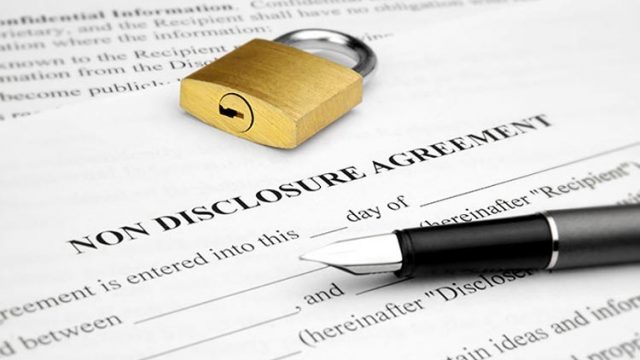According to experienced commercial lawyers Rowe Bristol Lawyers, with the modern day era of the internet, ever-increasing data size, and light-night fast communication across a broad array of platforms, confidential information can be taken and then distributed widely in the blink of an eye. Company secrets, so-called “crown jewel” data is a mouse click away from becoming disseminated across the globe.
So, it is important that confidentiality and Non-Disclosure agreements are in place at all appropriate levels in a company. These agreements should be well drafted, but not so onerous that it is difficult for the average person to evaluate and consider. One-sided, draconian agreements that grossly misappropriate the power of a business relationship are a thing of the past.
To that end, here are some tips and essential guidelines for drafting confidentiality and non-disclosure agreements in employment contexts.
Employment: Non-Disclosure agreements with employees. It’s important to consider several factors when deciding on what type of agreement is appropriate for employees. First, what type of employee are they? Front line troops? Executive level managers? It’s important to assess what types of information each level of employee has access to and then draft appropriately. A summer associate does not have access to the type of sensitive information that a Chief Human Resources Office would. Second, decide what information needs to be protected. Not all data is created equal. Next, decide the scenarios most likely for each level of employee to harm the business and then plan for the worst.
It may be beneficial to review NDA’s and Confidentiality Agreements at different stages of the employee lifecycle. At the outset of employment an individuals role may seem clear, but then over time it may change. Employee promotions are another event where a person may be granted access to a broader array of information, or when job duties are added. It’s important to consider what sort of agreement will be important at each stage of an employees tenure.
Definitions are also critical in any context when entering into these types of agreements. What constitutes “Confidential Information”. The term should be clearly defined. What is a “Trade Secret”? What does it mean to “return information”. Without precise definitions the enforceability of an agreement may be in question.
Exceptions to confidential information may fall into several categories: Information that was public at the time of disclosure. Information that becomes public through no fault of the individual signing the agreement. Data that has been previously disclosed or independently developed.
With the advent of mobile technology it’s also important to address the following:
- Bring your own device. What policies and procedures will govern personal mobile devices. Some companies require applications to be installed on personal devices whereby the company can remotely wipe clean all data from the device in the event of suspected breach of these agreements.
- Social Media. Social Media is another context sensitive information can be inadvertently disclosed. Pictures posted on popular websites could possibly contain sensitive information.
- Theft: If data or documents are stolen, what is the appropriate method for reporting?
- Destruction: What is the most appropriate way of destroying confidential data.
Following the tips and information above will help produce Non-Disclosure and Confidentiality agreements in the employment context that are more robust and useful for the business.
